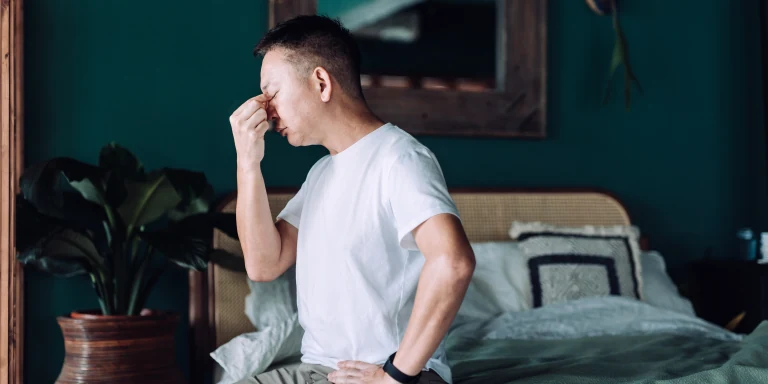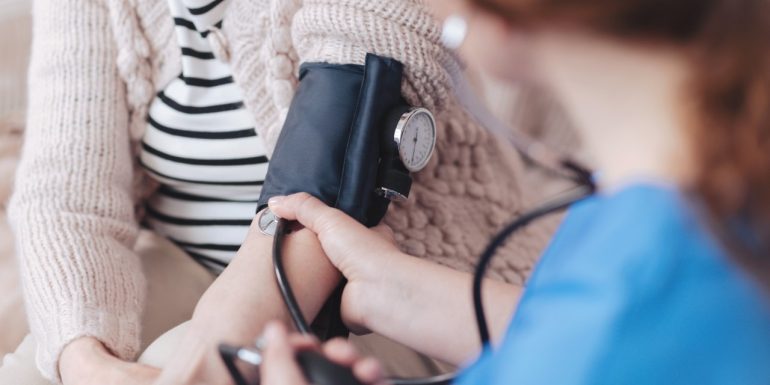
Low blood pressure: causes and consequences
Low blood pressure is also known as hypotension. It is where blood pressure is lower than it should ideally be. It is best to identify hypotension at an early stage as this will let you take suitable measures to avoid unpleasant consequences.
What is low blood pressure?
What exactly does it mean when blood pressure is too low? To help us understand this, let’s consider the terms “systolic” and “diastolic”. The systolic blood pressure reading shows the pressure on the blood vessels when the heart muscles contract. The diastolic reading measures the pressure when the heart muscles relax. The systolic reading is higher than the diastolic.
With normal blood pressure the reading will be at around 120/80 mmHg (millimetres of mercury). Women suffer from hypotension when the systolic reading is below 100 mmHg, and men suffer from hypotension when it is below 110 mmHg, with the diastolic reading not exceeding 60 mmHg. Important: For accurate results, make sure to always measure your blood pressure at the same time over multiple days.
Exercise is essential if you suffer from low blood pressure. To prevent over-exertion, you should incorporate smaller bouts of exercise into your daily routine. You could walk or cycle short distances, for example. Building exercise into your daily routine can have a positive effect on your well-being.
Achieve your personal health goals with the Helsana Coach app
Need inspiration? The Helsana Coach app gives you helpful tips and shows you exercises you can incorporate into your day-to-day life. Helsana Coach also provides fascinating background information and answers to key health-related questions.
Low blood pressure – possible symptoms
Low blood pressure often goes unnoticed because the symptoms are diverse and generic. The following symptoms can be signs of hypotension:
- Light-headedness through to fainting
- Tiredness and weakness
- Blurred or restricted vision
- Cold hands and feet
- Paleness
There are situations when low blood pressure is accompanied by a high pulse. This also includes dehydration, severe blood loss and blood poisoning. If you suspect you may have one of these conditions, be sure to contact your doctor. Acute cardiovascular instability is an emergency.
Low blood pressure and its causes
Many factors can cause hypotension. Genetic factors and lifestyle choices play a key role. Low blood pressure can sometimes be caused by heart or kidney diseases, dehydration, or endocrine disorders, such as hypothyroidism.
Depending on what causes your low blood pressure, hypotension can be broken down into three types:
- Primary hypotension: This form of hypotension occurs without any discernible medical causes and is often presumed to be genetic in nature. It often affects young, slim people – especially women.
- Secondary hypotension: This is caused by certain underlying conditions or by taking medication.
- Orthostatic hypotension: This type of hypotension is when your blood pressure drops abruptly when you stand up from sitting or lying down. Orthostatic hypotension can also cause symptoms such as light-headedness and fainting.
Low blood pressure as you get older
As you get older, the risk of secondary hypotension increases. This can be caused by limited cardiac function, angiopathy or lung conditions. Medications that people take as they get older, such as anti-depressants or tablets for benign enlarged prostates, can also cause low blood pressure under certain circumstances. So, it is important to have regular health check-ups so that potential problems can be identified at an early stage, meaning that they are easier to treat and do not impact quality of life.
Low blood pressure: what should you do?
There are non-medicinal therapies and, less commonly, medicinal therapies that can be used to treat hypotension. In most cases, it is not necessary to treat the low blood pressure unless it is causing symptoms. However, it is important to take into account the potential causes of hypotension, including possible secondary diagnoses, such as heart and kidney conditions. Therefore, you must follow the recommendations of your doctor and make yourself aware of how lifestyle changes could raise your blood pressure.
Low blood pressure: home remedies and good diet
Primary hypotension can be influenced by your diet. For example, those suffering from hypotension are encouraged to add salt to their food. Also important: a diet rich in vitamins and minerals – and plenty of fruit and vegetables.
You should also consider eating more, smaller meals at regular intervals to keep your blood pressure steady. It is also very important to make sure you’re getting enough liquids; water or unsweetened tea are the best options. This ensures that your blood volume is increased and your blood pressure stabilised. That makes sure that your body has enough oxygen, which in turn prevents light-headedness and tiredness.
Compression stockings can also be effective if you have orthostatic hypotension and regularly experience fainting and falls.
Low blood pressure: do sport and avoid stress
If you have low blood pressure, make sure you keep active and avoid too much stress. Regular moderate physical activity, like walking, or light endurance training can promote blood circulation, preventing low blood pressure. Make sure you listen to your body and avoid over-exertion. Do around 30 minutes of exercise multiple times per week. You’ll start to notice that your circulation reacts better to strains placed on it. Reducing stress also plays a key role in regulating blood pressure. Learn about relaxation methods such as meditation, breathing techniques and yoga, all of which can positively influence hypotension.
As well as having the right amount of exercise and relaxation, getting a good night’s sleep is just as important. Try to avoid sleep deprivation. When you wake up in the morning, don’t get up abruptly. Take your time and have a good stretch – first when lying down, then when sitting and finally when standing up. Contrast showers and brush massages can also help with low blood pressure because they promote blood circulation.
Is chronic low blood pressure dangerous?
From a medical perspective, low blood pressure is not dangerous in and of itself. In fact, it can be beneficial for the heart and circulation. That said, low blood pressure can sometimes cause unpleasant symptoms such as light-headedness, fainting, tiredness and blurred vision. These issues can be particularly problematic if they cause falls or accidents.
Low blood pressure can sometimes be a side effect of medication or a sign of other problems, such as heart or kidney conditions, endocrine disorders, such as hypothyroidism, or diabetes. If the symptoms of hypotension are causing you significant trouble, you should consult your doctor. This is the only way to rule out an underlying condition.
When treating hypotension, your well-being and general health are of the utmost importance. Even small changes to your lifestyle can have a positive influence on your blood pressure and help prevent low blood pressure – if just a little. In any case, be sure to speak to your doctor about it.

Sabrina Stollberg is a specialist in general surgery recognised by the Swiss Medical Association (FMH) and a research associate in Helsana’s Public Health Sciences team. She provided the editorial team with advice and input for this article.


Newsletter
Find out more about current health issues every month and get all the information you need about our attractive offers from all Helsana Group companies * delivered by e-mail to read whenever it suits you. Our newsletter is free of charge and you can sign up here:
We did not receive your information. Please try again later.
* The Helsana Group comprises Helsana Insurance Company Ltd, Helsana Supplementary Insurances Ltd and Helsana Accidents Ltd.
